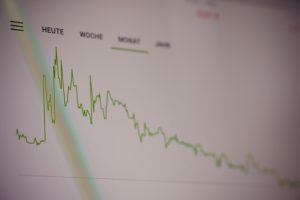The repo market and forex swaps are two vital components of the financial market that are often interconnected. The repo market is a marketplace where financial institutions, such as banks and hedge funds, can lend and borrow funds by using securities as collateral. On the other hand, forex swaps are a type of financial derivative that allows parties to exchange currencies at a predetermined rate and date. Although these two markets may seem unrelated, they can have a significant impact on each other.
The repo market can affect forex swaps in several ways. Firstly, the repo market has a direct impact on the interest rates that financial institutions charge for lending and borrowing funds. In the repo market, the interest rate is determined by the supply and demand for funds, as well as the creditworthiness of the parties involved. When the demand for funds is high, the interest rate increases, and when the demand is low, the interest rate decreases. The interest rate in the repo market is closely tied to the benchmark interest rate, such as the Federal Funds rate or the LIBOR rate. The benchmark interest rate is set by the central bank and is used as a reference rate for financial institutions.
The interest rate in the repo market can affect forex swaps because it influences the cost of borrowing and lending funds to exchange currencies. Suppose a financial institution wants to borrow funds to exchange currencies through a forex swap. In that case, the interest rate in the repo market will determine the cost of borrowing funds. A higher interest rate in the repo market will increase the cost of borrowing funds, which will, in turn, increase the cost of forex swaps. Conversely, a lower interest rate in the repo market will decrease the cost of borrowing funds, which will decrease the cost of forex swaps.
Another way the repo market can affect forex swaps is through the availability of funds. In the repo market, the supply of funds is determined by the availability of securities that can be used as collateral. If there is a shortage of securities in the repo market, financial institutions may have difficulty borrowing funds. This, in turn, can lead to an increase in the interest rate in the repo market. The shortage of funds can also affect forex swaps because financial institutions may not have enough funds to exchange currencies through forex swaps. This can lead to a decrease in the supply of forex swaps, which can lead to an increase in the cost of forex swaps.
The repo market can also affect forex swaps indirectly through its impact on the overall market liquidity. Liquidity refers to the ease with which financial instruments can be bought and sold without affecting their market price. When the repo market is liquid, financial institutions can easily borrow and lend funds, which can increase the overall market liquidity. This can lead to a decrease in the cost of forex swaps because financial institutions can easily find funds to exchange currencies. Conversely, when the repo market is illiquid, financial institutions may have difficulty borrowing and lending funds, which can decrease the overall market liquidity. This can lead to an increase in the cost of forex swaps because financial institutions may have difficulty finding funds to exchange currencies.
In conclusion, the repo market and forex swaps are two interconnected markets that can have a significant impact on each other. The interest rate, availability of funds, and overall market liquidity in the repo market can affect the cost of borrowing and lending funds, which can, in turn, affect the cost of forex swaps. As such, financial institutions must closely monitor both markets to make informed decisions regarding their investments and currency exchange strategies.













